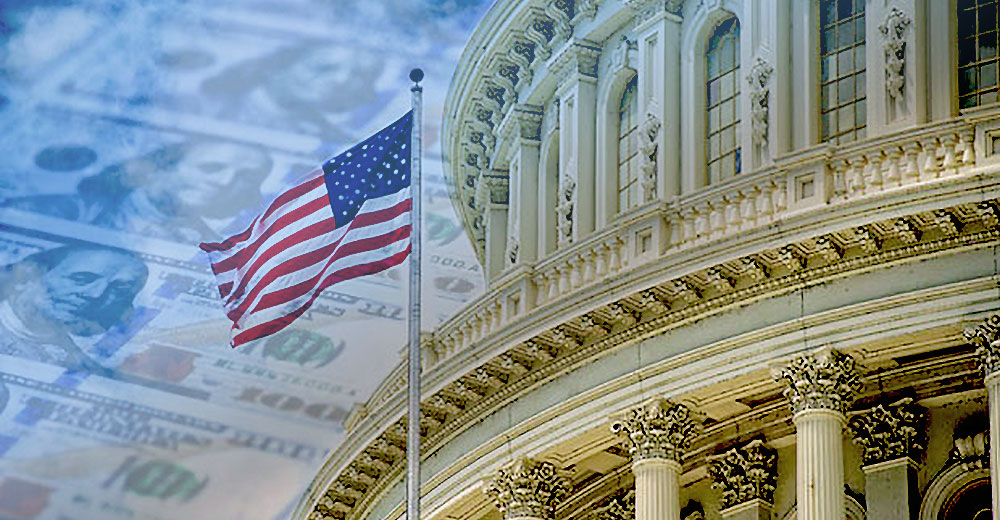The U.S. technology industry is guardedly supporting a massive legislative package designed to address a range of issues affecting the sector, including a federal commitment to add billions of dollars to government technology research and development programs.
The legislation, dubbed the U.S. Innovation and Competition Act (USICA), was approved on June 8 by a rare bipartisan vote of 68-32 in the U.S. Senate.
A major factor driving the legislation is the contention that the U.S. has fallen behind China in a national effort to support technology development, including information technology and the digital economy. Sen. Todd Young, R-Ind., characterized the legislation as “a landmark bill to out-compete China in key emerging technology areas critical to our national security.”
Specific areas of focus in the bill include artificial intelligence, machine learning, and other software advances; high-performance computing, semiconductors, and advanced computer hardware; quantum computing and information systems; biotechnology, medical technology, genomics, and synthetic biology; cybersecurity; and energy innovation, including battery technology.
Multiple Amendments
The package started out as the Endless Frontier Act, co-sponsored by Sen. Chuck Schumer, D-N.Y., and Sen. Young, among others. That bill was ambitious enough as first introduced in April. The bill focused on boosting funding for the National Science Foundation (NSF), including the creation of a new NSF “Directorate for Technology.”
However, the bill attracted additional provisions during the legislative process, including some which were really complete stand-alone bills that were rolled into the final package, resulting in a 2,300-page proposal.
The legislation even includes the CHIPS for America program to provide $52 billion in federal support for domestic semiconductor development and production.
For companies involved in IT and the digital economy, an important part of the USICA bill deals with significantly boosting federal investments in technology through the National Science Foundation. Both the proposed funding levels and the government’s approach to managing those investments are critical issues requiring close attention from the IT sector.
Under the Senate USICA bill, NSF’s annual budget would nearly double to an average of $16 billion per year over five years from 2022 to 2026. The current fiscal 2021 budget is $8.5 billion. This huge boost in investment is largely related to funding a new NSF Directorate for Technology and Innovation at an average of nearly $6 billion annually from 2022 to 2026.
Private Sector Partnerships
Private sector IT and digital economy entities will be major beneficiaries of the new NSF directorate. The purpose of the directorate is to “strengthen U.S. leadership in critical technologies” and to “accelerate technology commercialization.”
The legislation further provides that the proposed directorate should “direct basic and applied research, advanced technology development, and commercialization support in the key technology focus areas” listed in the bill. Through the directorate, NSF is expected to form partnerships with other federal agencies as well as with “academia, the private sector, and nonprofit entities.”
The move to establish closer ties between NSF and the private sector has raised concerns about the foundation’s traditional role of engaging in “pure” or basic research unfettered by commercial considerations.
Robert Atkinson, president of the Information Technology Innovation Foundation (ITIF), said soon after the NSF directorate was proposed, there was “pushback.” The scientific community, he noted, “resisted the idea that government would be asking them to do work related to a critical national mission, and to hold them accountable for ensuring that their work helped accomplish that mission.”
While ITIF supports the provisions in USICA which create the new NSF technology directorate, Atkinson told the E-Commerce Times that “an even more effective approach would be to establish such a directorate as a free-standing agency.”
A separate umbrella entity tuned in to the full range of federal technology activities would avoid any conflicts with the traditional missions of NSF and other agencies while creating a national effort to support both government and commercial private sector technology development, he contends.
Atkinson favors the creation of a National Advanced Industry and Technology Agency, at the same size as NSF, to “analyze U.S. industry strengths, weaknesses, opportunities, and threats, and to respond with well-resourced solutions ranging from support for domestic research and development to production partnerships and investment in advanced research facilities.”
More than 50 other countries have established such agencies, he noted.
“It is clear that NSF and the science community are uneasy” with taking on applied science with commercial connections versus NSF’s traditional mission, Atkinson said, adding that NSF would “vastly prefer” just getting much larger appropriations.
“But that would do little to help U.S. technology-based competitiveness,” he said. Establishing a separate agency would let NSF continue its mission while enabling applied and industry-focused research to be funded elsewhere, he observed.
Advocates, Opponents Take Positions
Whether the USICA package represents a comprehensive approach to developing a national technology capability through government intervention — or a confusing legislative hodgepodge — is likely to be in the eye of the beholder. Differences related to NSF’s future mission aren’t the only potential stumbling blocks affecting the eventual enactment of the USICA legislation.
For example, the Computer and Communications Industry Association (CCIA) approved the major USICA goal of supporting increased federal investments for technology research and development but found other parts of the bill “worrisome.”
One section of the bill deals with “Country of Origin Labeling” (COOL) requirements associated with the internet marketing of internationally sourced products. While COOL especially impacts the U.S. retail marketing sector, digital economy entities have concerns as well.
Arthur Sidney, vice-president of CCIA, noted that country of origin provisions in the bill present implementation challenges “given the volume of transactions and no consistent, uniform, and administrable definition” related to COO coverage. “Country of Origin in the international trade context is difficult to administer by customs and authorities, let alone a digital service,” he told the E-Commerce Times.
Sidney also expressed concern about the section of USICA aimed at curbing the use of censorship as a trade barrier tool. The language that would refer such activities to legal authorities for action was “scaled back” in the Senate bill, he contended. It was replaced by provisions that simply called for an annual report to Congress with a list of countries that use censorship as a barrier to digital trade and a description of the agencies’ efforts to address digital trade disruptions, he said.
While the U. S. Chamber of Commerce expressed general support for the bill in a June 9 statement, Neil Bradley, executive vice president and chief policy officer, said the Chamber had “ongoing concerns” about the bill. In a letter to the Senate in May, the Chamber advocated the elimination of the Country of Origin section and expressed reservations about provisions that impact e-commerce, such as “Cyber Shield, copyright, and information in the public domain.”
The Senate bill must now be considered by the House of Representatives, where similar legislation was approved Monday. However, the House bill only focused on the research scope of NSF and the U.S. Department of Energy. The House bill also includes a new NSF technology solutions directorate but is funded at a much lower level than the Senate version.
The ultimate outcome for USICA could take several paths. Since amendments to the Senate bill were added with relative ease, they could be scuttled just as easily, allowing the core NSF and national technology investment elements to be the focus for legislators. Or the collective controversies associated with the different versions of the legislation could stymie adoption.
Regarding chances for the enactment of USICA, CCIA’s Sidney noted, “We aren’t sanguine, but we are hopeful that this will see the light of day. While it’s not perfect, and we have some concerns, we are hopeful that it can help businesses and serve as one of the building blocks to protect U.S. innovation and technology.”























































Social Media
See all Social Media